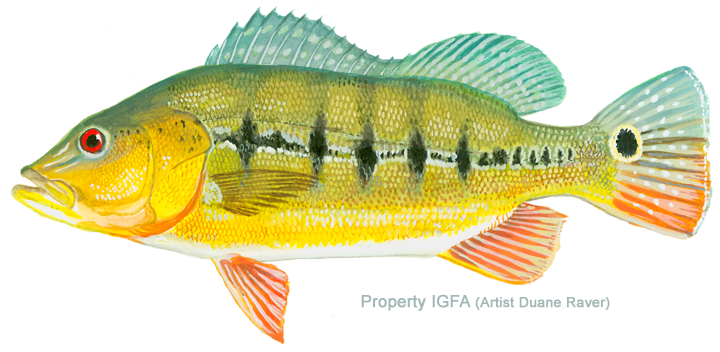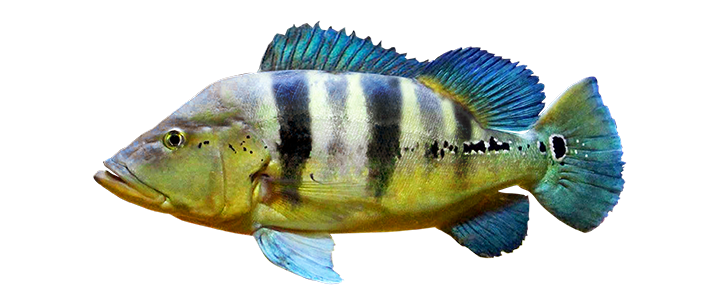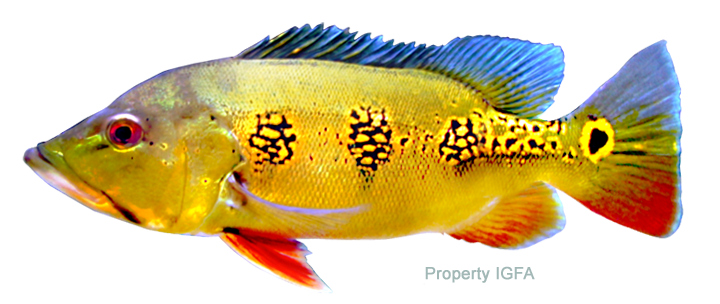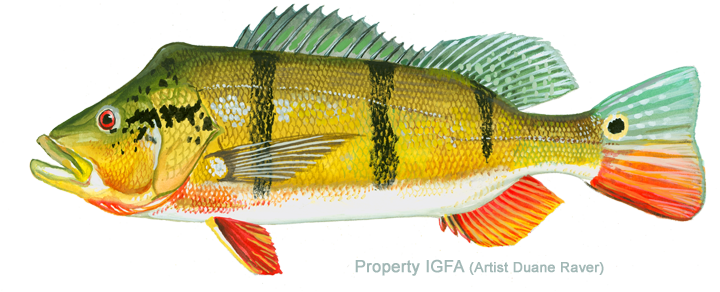Game Fish Identification Reference Guides
Peacock, butterfly
(Cichla ocellaris)
(Cichla ocellaris)
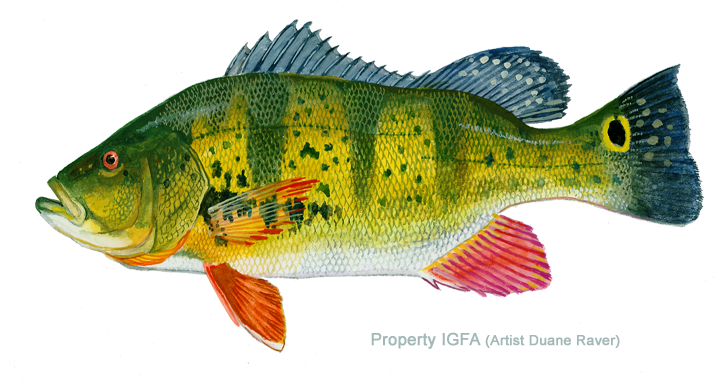
Bloch & Schneider, 1801; CICHLIDAE FAMILY; also known as pavón mariposa, pavón amarillo, marichapa or pavón tres estrellas, tucunare, lukanani
The butterfly peacock is native to tropical South America. It was introduced in Hawaii in 1957 and in Florida in 1984 and 1986. It has also been stocked in many other countries including Puerto Rico, Panama, Kenya, Guam and the Dominican Republic.
Of all the peacock basses, the butterfly peacock has the greatest variation in color. They are yellowish green, with three dark, yellow-fringed blotches along the lateral midsection, or bars that typically fade in fish larger than three or four pounds. A smaller “eyespot” spot, characteristic of all "pavónes,” appears at the beginning of the caudal fin. The iris of the eye is frequently deep reddish in color. They are also distinguished by the absence of black markings on the opercula. This species is believed to attain weights of 11 to 12 pounds.
The butterfly peacock’s powerful, laterally compressed body and aggressive temperament make it pound for pound one of the hardest fish to handle on light tackle, but because of the size, light spinning, bait casting, or fly fishing outfits are recommended. Small fishes such as shiners or threadfin shad are the best bait, but light spinning lures and surface lures that resemble small fish are also highly effective. The butterfly peacock has rapidly become the one of the most popular game fish in the areas where it has been introduced. It is more than just a fighter. It is not only beautifully colored but tasty as well
The butterfly peacock is native to tropical South America. It was introduced in Hawaii in 1957 and in Florida in 1984 and 1986. It has also been stocked in many other countries including Puerto Rico, Panama, Kenya, Guam and the Dominican Republic.
Of all the peacock basses, the butterfly peacock has the greatest variation in color. They are yellowish green, with three dark, yellow-fringed blotches along the lateral midsection, or bars that typically fade in fish larger than three or four pounds. A smaller “eyespot” spot, characteristic of all "pavónes,” appears at the beginning of the caudal fin. The iris of the eye is frequently deep reddish in color. They are also distinguished by the absence of black markings on the opercula. This species is believed to attain weights of 11 to 12 pounds.
The butterfly peacock’s powerful, laterally compressed body and aggressive temperament make it pound for pound one of the hardest fish to handle on light tackle, but because of the size, light spinning, bait casting, or fly fishing outfits are recommended. Small fishes such as shiners or threadfin shad are the best bait, but light spinning lures and surface lures that resemble small fish are also highly effective. The butterfly peacock has rapidly become the one of the most popular game fish in the areas where it has been introduced. It is more than just a fighter. It is not only beautifully colored but tasty as well













